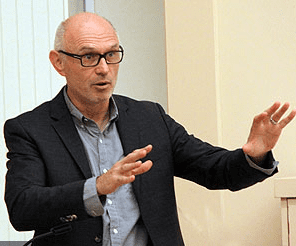 If you listen to the media you will hear that religion is dying, and in some ways the emergent movement was an attempt to say “we are the future because the present will die off.” At work in some themes and memes in the emergent movement was a secularization theory that assumed the present European situation would be ours inevitably but there was some hope to reverse the direction.
If you listen to the media you will hear that religion is dying, and in some ways the emergent movement was an attempt to say “we are the future because the present will die off.” At work in some themes and memes in the emergent movement was a secularization theory that assumed the present European situation would be ours inevitably but there was some hope to reverse the direction.
One cannot dispute shifts and changes among young adults in the USA but the theory that the church is dying in the USA has been disproven time and time again. That song has not been heard by some but it’s true — check out the best studies of the sociologists like Christian Smith, Bradley Wright, and Rodney Stark.
Now add to that chorus of specialists the most recent book by Miroslav Volf, Flourishing: Why We Need Religion in a Globalized World. Religion is not on the decline, even if it has plenty of quacks. Volf is ahead of the game and ahead of the church, and for those reasons he needs to be read: most don’t know much about globalization but it’s happening, its highly influential and before long we will all realize its impacts. Volf is mapping what is happening. Hence, read Volf.
What most people hear about religion from the media is the eccentric and kooky, but Volf points to the far more important and common elements of religious life:
But even today, in a media-saturated world, religions are alive mainly off-line, away from cameras and sometimes literally underground—in prayers and religious instruction at home, in communal worship services, in reflection on sacred texts at work, in celebration of births and harvests, in transitions from childhood to adulthood, from singleness to marriage, from life to death—and in all this religions are at work energizing, consoling, healing, liberating, and directing peopie’s lives, giving them meaning (60).
He points to the numbers, not always easy to calculate, but they are there and they tell the story that religion is alive and well in the world. The whole secularization theory is ignoring the evidence that religions are flourishing:
Take, first, the absolute numbers, tracked between 1970 and 2005. All major world religions increased in adherents, most boasting of spectacular gains:
Buddhists: from 233 to 379 million
Christians: from 1,236 to 2,135 million
Hindus: from 463 to 870 million
Jews: from 14 to 15 million
Muslims: from 554 to 1,314 million (61-2)During the same period (1970-2005), the number of adherents of those religions grew in relative terms as well: from 67.8 percent to 72.4 percent of the world population. 62
His contention is that globalization is helping it along, and the numbers show the importance of religion in the world:
But in fact, religions are thriving with the help of the instruments and social transformations globalization processes supply (62).
Whatever their truth or falsity, whatever good they may effect or damage they may wreak, their [religions’] continued growth in both absolute and relative terms is a testimony to their immense attractiveness and power. They shape the lives of more than two-thirds of the world population, providing people with what they believe to be ways to attain salvation, cope in crises, and stay in touch with transcendent forces; giving them a sense of who they are as individuals and communities; and guiding them in how they should relate to others and what good they should strive to achieve. World religions have rendered such service to human beings for millennia while empires have come and gone, political and economic systems have changed in succession, and ideologies, languages, and whole cultures have disappeared. Today, world religions are thriving, and nothing suggests that will change in the foreseeable future (63-4).
They have also become more assertive in the public sector. Religions speak comprehensively to individuals, to the human condition, and to the cosmos:
… all six features of world religions [sketched in the previous pages] are convictions that concern the nature and purpose of human existence. World religions are more than moral anthropologies and cosmologies, of course; they are more than a set of convictions situating people in the world and providing orientation for their lives. Each contains narratives, symbols, rituals, sacred times, places, and objects; each generates pervasive moods, even passions, and motivations in its adherents; each is alive in local communities; each offers ways to ward off individual and collective misfortune as well as to enhance ordinary flourishing; each marks group boundaries and generates solidarities, and so on (71).
Volf is not naive; religions have malfunctions, and he touches briefly on three: behavioral, teaching, and belonging.
What matters most to Volf in this chp is the impact of globalization on religion, and he sees two changes, one positive and one negative:
1. Globalization is transforming the relationship of world religions to the state (84).
With regard to world religions’ relation to society and the state, globalization is more their friend rather than their enemy. By generating multireligious societies, globalization offers world religions an opportunity to return to themselves: to be the means of embracing a “cosmopolitan” god, to use Nietzsche’s terms, a god “for everybody” who is “at home everywhere,” a god impartial to “friend and foe”; to be carriers of universal visions of human flourishing, distinct from any particular political society and relating to all people as human beings, whether they are political insiders or outsiders (86).
2. But in regard to religions’ relation to health, wealth, longevity, and fertility, globalization may, conversely, be luring them to betray these visions (88).











